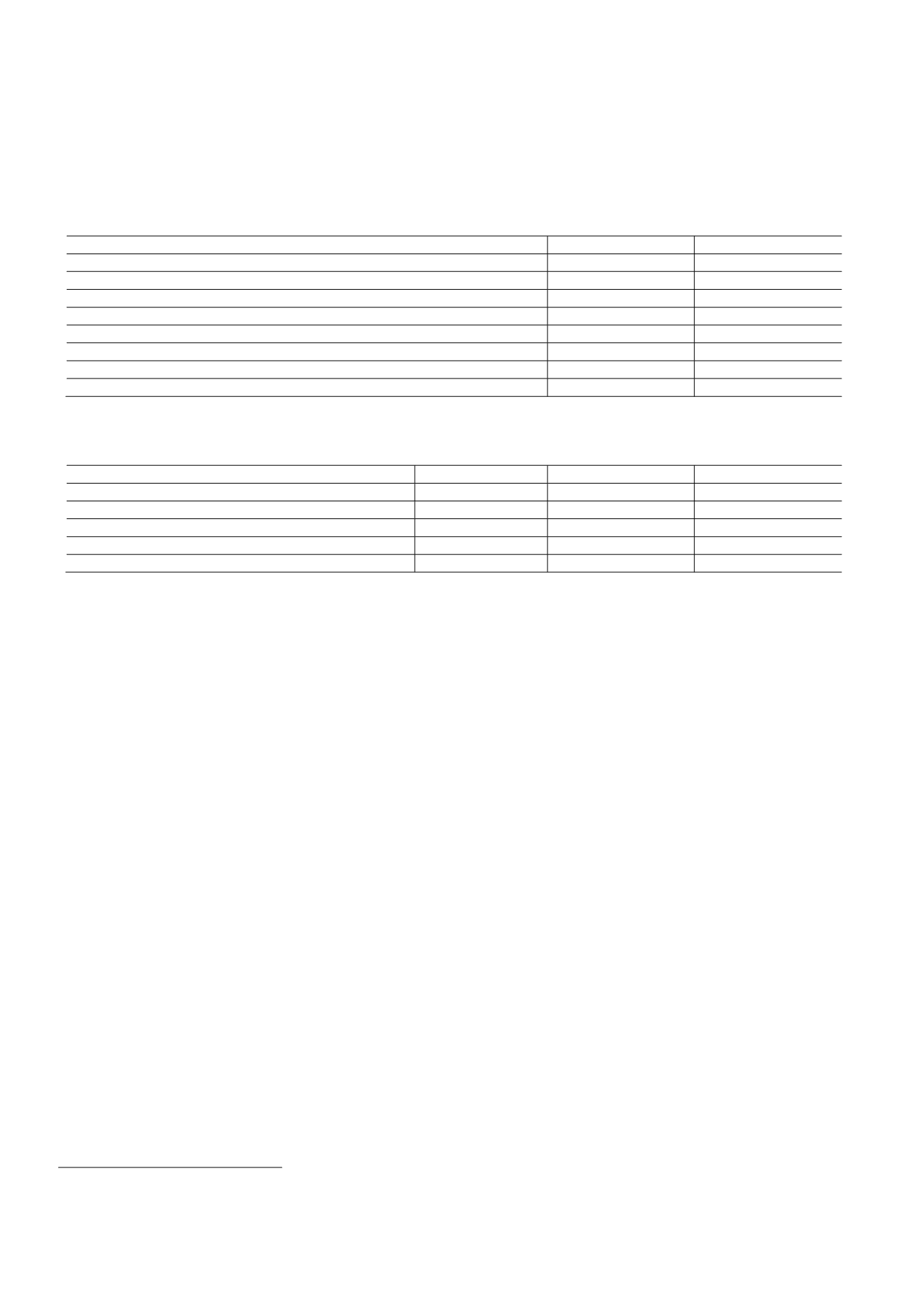
69
CIMIC Group Limited Annual Report 2016 |
Sustainability Report
69
Increasingly, governments are seeking to integrate sustainability into their procurement in a way that achieves value for money and
generates benefits not only for the organisation, but also for society and the economy, while minimising damage to the environment. CPB
Contractors has developed an innovative capability in the area of sustainable buildings and infrastructure, and is currently the leading
sustainability contractor in the Australian market, working on or having delivered 16 ISCA registered or certified projects worth more than
$18.5 billion in total.
In 2016, CPB Contractors reported the following Green Standard projects:
CPB Contractors’ Green Standard projects (#)
Registered
Certified
ISCA – Design
8
0
ISCA – As built
4
4
Green Star – Design
2
22
Green Star – As built
0
9
Green Star – Interiors
0
3
Green Star – Performance
0
1
LEED
40
– Silver
1
0
Green Roads
41
– Pilot
1
0
In 2016, revenue generated by CPB Contractors from sustainably rated or ‘green’ projects was almost $2.1 billion. CPB Contractors’
position as a sustainable contractor with a track-record in delivering ISCA rated projects positons the company well for the future.
CPB Contractors' Green Standards project revenue ($m)
2016
2015
2014
ISCA
1,801
1,274
687
Green Star
202
521
774
LEED
0
82
95
Green Roads
80
45
36
Total
2,083
1,922
1,592
The 177 Pacific Highway project in North Sydney, developed by Leighton Properties and constructed by CPB Contractors, is a 30 storey,
40,000 square metre A-grade commercial office tower and is 5-star Green Star and 5-star NABERS rated. The project features a number of
sustainable initiatives including:
•
water efficient fittings/fixtures to minimise potable water consumption in conjunction with a 90,000 litre rainwater capture system
servicing irrigation, toilet and urinal flushing demands;
•
using concrete mixes developed to utilise industrial waste products as aggregate, reducing the requirement for raw mined aggregates
and using recycled/reclaimed water, together with the selection of structural reinforcing steels with high strength grades, to minimise
the material requirement;
•
demand control ventilation that adjusts ventilation rates and ensures carbon dioxide (CO2) levels are kept low, maximising the quality
of breathable air for occupants; and
•
a highly efficient lighting design that incorporates re-programmable lighting control zones of no greater than 100 square metres,
providing greater control flexibility and reducing tenant energy consumption and running costs.
A notable feature of the design is the large cutaway (cut-out) sections of the building which increase the amount of sunlight to the
community in North Sydney. The ingenious solution incorporates large cutaway sections within the centre of the tower to allow solar
access to Council's ‘special areas’ on the winter solstice. The provision of these cut-away sections also permitted the building to rise 42
metres above Council’s previously defined maximum height limit.
MANAGING RISK
The recognition and management of risk is embedded in all activities of the Group and is a core part of our culture. The Group’s exposure
to risk stems from its broad and evolving business risk profile, which covers areas including operations, safety, reputation, regulation,
contracts, human resources, finance, information and strategy.
As required by the CIMIC Board, management has implemented a policy framework designed to ensure that the Group’s material
business risks are identified and that adequate controls are in place and function effectively, and for management to report to the Board
on whether those risks are managed effectively. This framework incorporates the maintenance of comprehensive policies, procedures
and guidelines which span the Group’s diverse contracting and project development activities, including setting financial controls,
conducting business audits, investment and acquisition overview, and ensuring high standards in corporate communications and external
affairs. The CIMIC Group Risk Framework is based on International Standard ISO 31000:2009 ‘Risk management – Principles and
guidelines’, and forms the basis for CIMIC’s risk management activities.
40
Leadership in Energy and Environmental Design (LEED) is a rating system devised by the United States Green Building Council (USGBC) to evaluate the
environmental performance of a building and encourage market transformation towards sustainable design.
41
Greenroads is an
independent non-profit that advances sustainability performance management and education for transportation capital projects.
69


